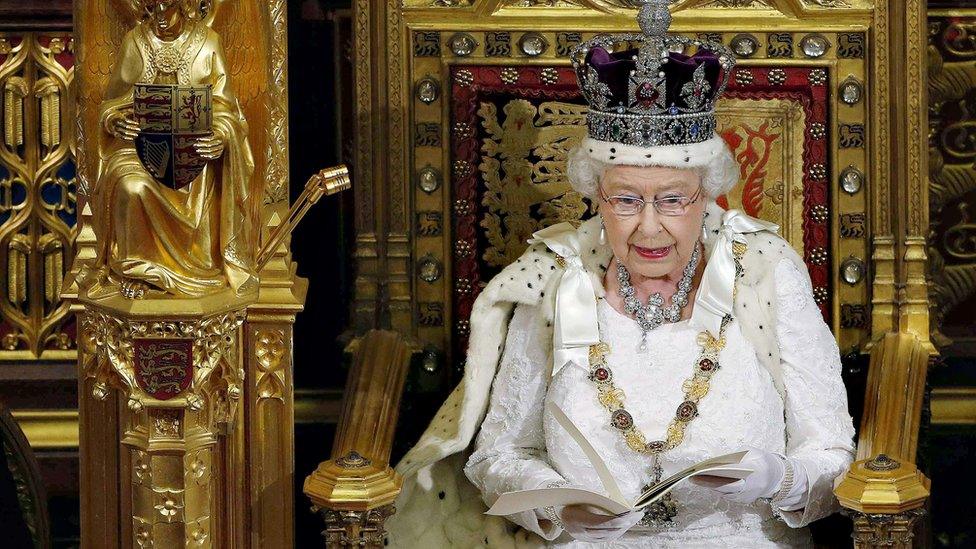Brexit: The government has just lost its majority
- Published
- comments

Boris Johnson is still the UK prime minister but for the first time there are more Members of Parliament (MPs) lined up against him, than there are on his side.
It's after one of his MPs changed teams.
A government is usually made up of the party with the most MPs on its side.
In order to get the laws it wants passed, a government needs a majority - that means more than half of the politicians in the House of Commons agree to support their plans.
But since Theresa May won a close victory in the general election of 2017, the Conservative Party has been short of that half-way mark.
To get their policies voted through, the Conservatives did a deal with the Northern Irish party the Democratic Unionist Party (DUP).
But over time, due to arguments over Brexit and one-off elections, that lead in MP numbers has slowly gone down.
Then today, in the middle of Prime Minister Boris Johnson's speech to Parliament, another of his team of MPs, Phillip Lee, got up and walked over to sit with the Liberal Democrat Party.
This is called 'crossing the floor', as an MP has walked across the floor in the House of Commons.

So what happens next?
That means that the government - with the support of the DUP - now has 319 MPs on their side and 320 against them.
That's called having a minority government.
It's happened before, but it means it's much more difficult for the government to get laws passed without finding extra support by trying to arrange extra deals with MPs from other parties.
That's not ideal in one of the biggest weeks the government has faced.
- Published3 September 2019

- Published28 August 2019

- Published1 September 2019

